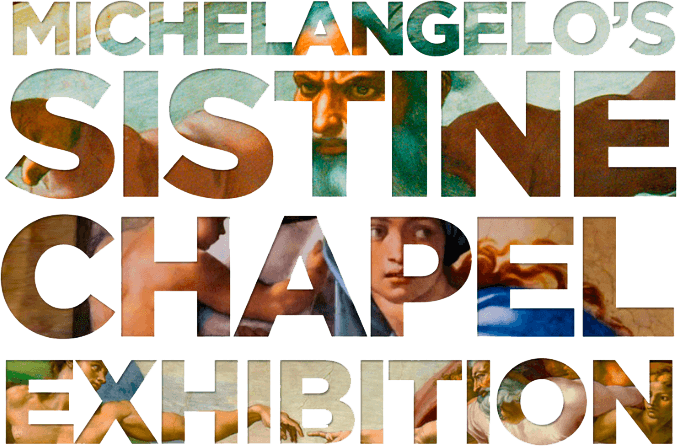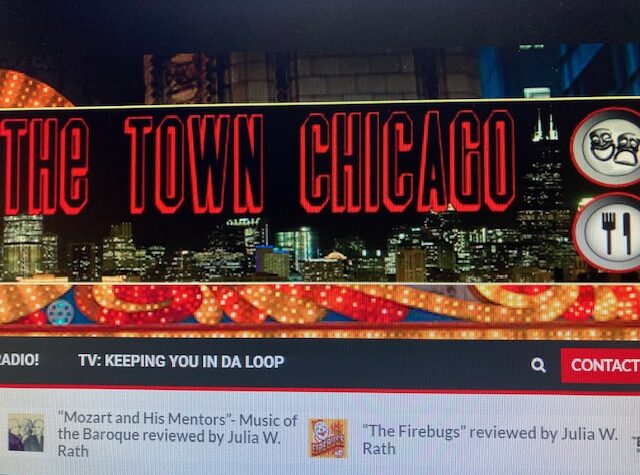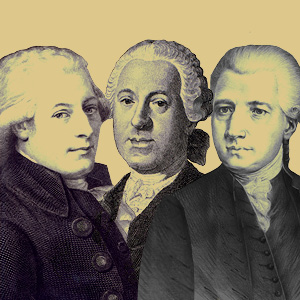
 Highly Recommended! ***** Michelangelo was a sculptor and painter of the High Renaissance, famed for painting frescos with Biblical themes onto the ceiling of the Sistine Chapel, at the Vatican, in Rome. A four-and-a-half-year effort, his masterpiece was unveiled in 1512. Twenty years later, he was brought back to create the painting of The Last Judgement to cover the altar wall; this project took another five years. Recreating all of Michelangelo’s magnificent frescos in impeccable detail, the inspiring Sistine Chapel Exhibition is currently touring the Chicago area. Photographers using high-power digital cameras took photos of the original artwork, which were then transferred (using a Giclée printing process) onto a nylon-based mesh, similar to the fabric of a movie theater screen. These individual canvases have been stretched into panels and held up by steel bars. It is an extraordinary effort, and regardless of what sacred or secular tradition you come from (or none of the above), the viewer cannot help but appreciate the scope, magnitude, and fine detail of both of the artwork and the representational photography, which captures intense facial features, naturalistic poses, period costuming, and sometimes even the original cracks in the frescoes. The first such exhibition of Michelangelo’s work took place in Montreal, in 2015, and the one presently in the Chicago area can be found in a museum-like setting in a portion of the old Sears building at the Oakbrook Mall, in Oak Brook, Illinois.
Highly Recommended! ***** Michelangelo was a sculptor and painter of the High Renaissance, famed for painting frescos with Biblical themes onto the ceiling of the Sistine Chapel, at the Vatican, in Rome. A four-and-a-half-year effort, his masterpiece was unveiled in 1512. Twenty years later, he was brought back to create the painting of The Last Judgement to cover the altar wall; this project took another five years. Recreating all of Michelangelo’s magnificent frescos in impeccable detail, the inspiring Sistine Chapel Exhibition is currently touring the Chicago area. Photographers using high-power digital cameras took photos of the original artwork, which were then transferred (using a Giclée printing process) onto a nylon-based mesh, similar to the fabric of a movie theater screen. These individual canvases have been stretched into panels and held up by steel bars. It is an extraordinary effort, and regardless of what sacred or secular tradition you come from (or none of the above), the viewer cannot help but appreciate the scope, magnitude, and fine detail of both of the artwork and the representational photography, which captures intense facial features, naturalistic poses, period costuming, and sometimes even the original cracks in the frescoes. The first such exhibition of Michelangelo’s work took place in Montreal, in 2015, and the one presently in the Chicago area can be found in a museum-like setting in a portion of the old Sears building at the Oakbrook Mall, in Oak Brook, Illinois.
People from various faith perspectives will find this exhibit religiously meaningful, in large part because it tells of Biblical stories that many are already familiar with. Artists and art historians can especially appreciate Michelangelo’s technique, from the plaster involved in the base material to the mixing of the various pigments to the transfer of the human forms from drawings onto the ceiling using charcoal. We learn from the introductory video “Artrageous with Nate” produced by PBS, about the speed with which Michelangelo worked, and we come to understand how the constant standing and lying on his back to paint his masterpieces with exactitude made him rather surly and antisocial. In fact, we see his self-portrait in one small spot in The Last Judgement, where he reveals himself as flayed and broken.
What I liked most about the exhibit was that there were so many different things to focus on and think about, and a visitor can understand and interpret the artwork on so many different levels. For example, I concentrated on the more cinematic aspects of how Michelangelo divided up larger spaces into themes and how he created more than one scene with multiple people in a frame (and often showing past, present, and future at once), while other frames contained more intimate scenes depicting families and individuals. The placement of all these themes next to each other is reminiscent of storyboarding in film.
Then too, Michelangelo was one of the first Renaissance artists to portray (Father) God in wholly human form, from His head and His fingers down to His toes. Since man was created in God’s image, there was no deep-seated religious problem in Christianity to portray God in man’s image, unlike traditional Judaism and Islam, where the physical embodiment of God would have been considered a graven image and thought to facilitate idolatry. Hence, in this respect, the exhibit of Michelangelo’s work represents a very Christian perspective on faith: both in the nature of the artwork itself and the accompanying descriptions (on placards and in the more detailed audio tour) which interpret many of the Old Testament Bible stories as foreshadowing the coming of Christ and the Resurrection.
Allow me to focus on a few more things regarding the master’s craft. For example, I found it very interesting that Michelangelo had all the Jewish prophets read from scrolls, which, according to the audio description, turned them into intellectuals. From my perspective, the traditional Jewish emphasis on reading from the Torah (namely, the five books of Moses) is a commandment by God. Jewish men have traditionally studied and interpreted the Torah and related Scriptures to gain a knowledge of divine law and God’s purpose as He reveals Himself among the generations of His people. If anything, Michelangelo’s depictions of the prophets foreshadowed the advent of Protestantism and the Reformation, where people were encouraged not just to follow in the oral tradition of the Catholic Church but to read the Old and New Testaments for themselves. (Note that Martin Luther nailed his famous ninety-five theses on the door of the castle church in Wittenberg in 1517, just five years after the ceiling’s unveiling.)
Another item of interest was the representation of one of Michelangelo’s most famous paintings The Creation of Adam, from the book of Genesis, located on the far wall of the exhibit. The audio description makes it a point that previous artistic depictions of Creation were focused on God’s breath, whereas Michelangelo transformed this into a physical act, with God extending his hand from the Beyond to the hand of his creation Adam, who is resting on earth. (Note that detail from this painting serves as the logo for this art exhibition.) In that fresco, one can notice that Adam has a bellybutton, which would have been absent had he been created fully-formed by God and not born of a woman. This detail has always been a mystery, considering just how meticulous Michelangelo was in being true to the original Scripture. Could he have actually doubted the creation story? 20th century sculptor Milton Horn responded to Michelangelo’s fresco with his own Creation of Adam (detail from Hymn to Water, 1966). In his interpretation, Horn has God blow a breath of air into Adam’s body and pokes him humorously in the tummy to form his bellybutton.
Finally, I concentrated on how the exhibit was installed. According to the manager Dakota Lauren, it took two years to find the proper material on which to print the digital photos, and there was initially one machine in the entire world (in Berlin, Germany) capable of reproducing the huge-scale images onto a fabric that was large enough to fully display the great works, making them suitable for a museum-like exhibition. A second machine was subsequently built in Santa Monica, California, to create additional canvases. Unfortunately, the ceilings in this building are not tall enough to display the original reproduction of The Last Judgement, so a reduced-scale version had to be substituted.
Because one can get up close and personal to all of these huge, nicely-lit canvases, going to this show can be almost as meaningful as seeing the originals on site in Rome. I can honestly say that, because I have been to the Sistine Chapel in person, albeit before the relatively recent restoration of the frescoes. Unlike being rushed through the actual chapel and elbowing lots of tourists from around the world, this experience is a lot calmer—if not better—because you can take your time exploring all the fine detail. Expect to take about two hours to go through everything if you watch the introductory video and listen to the entire audio tour. But you can choose to go through it all much more quickly. Personally, I savored all the artwork and its history and my previous remembrances of going to Italy to see these and other works first-hand. My guest, a lay rabbi who had never been to the Sistine Chapel or to Europe, was totally engrossed by the presentation. As Lauren later explained, “The Van Gogh Exhibit is a show; this is an education.”
Michelangelo’s Sistine Chapel: The Exhibition in Chicago is open to the public through August 15, 2021.
Hours are:
Wednesdays and Thursdays – 11:00 a.m. – 7:00 p.m.
Fridays and Saturdays – 11:00 a.m. – 8:00 p.m.
Sundays – 11:00 a.m. – 6:00 p.m.
Closed on Mondays and Tuesdays.
Tickets are $20 for adults.
For more information and to purchase tickets online, go to www.sistinechapelexhibit.com and click on the Chicago icon. Walk-up tickets are also available at the box office on site.
Parking at Oakbrook Mall is free and ample.
To find the exhibit, DO NOT DO AS INSTRUCTED ON THEIR WEBSITE and type in 2000 Oakbrook Center, Oak Brook, IL 60523 into your favorite online map application. (You’ll get “Location Unavailable” or get misdirected or receive incomplete information.)
INSTEAD, for directions to the exhibit, please go to GOOGLE MAPS and type in SISTINE CHAPEL CHICAGO.
Note that the landmark in the shopping mall is Lifetime Fitness; they share the same parking lot on the lower level. There is a sign for the exhibit just above the entrance. Note that the location is a converted basement inside the old Sears building. The lack of directional signage at Oakbrook Mall is a major problem. The semi-permanent maps in the mall do not list “Old Sears Store” on them. This information is also absent online.
We happened to eat at True Food Kitchen in the mall and were told that the exhibit can be seen from the restaurant. Well, not exactly. If a portable sign in the mall directs you to the stairs by L.L. Bean, be sure to walk down to ground level and continue walking in the direction of the Lifetime Fitness building. You should see the sign for the Sistine Chapel exhibit just before you turn the next corner.






More Stories
Finding Paul Lisnek
“Mozart and His Mentors”- Music of the Baroque reviewed by Julia W. Rath
Our Milwaukee “Staycation” 2025!